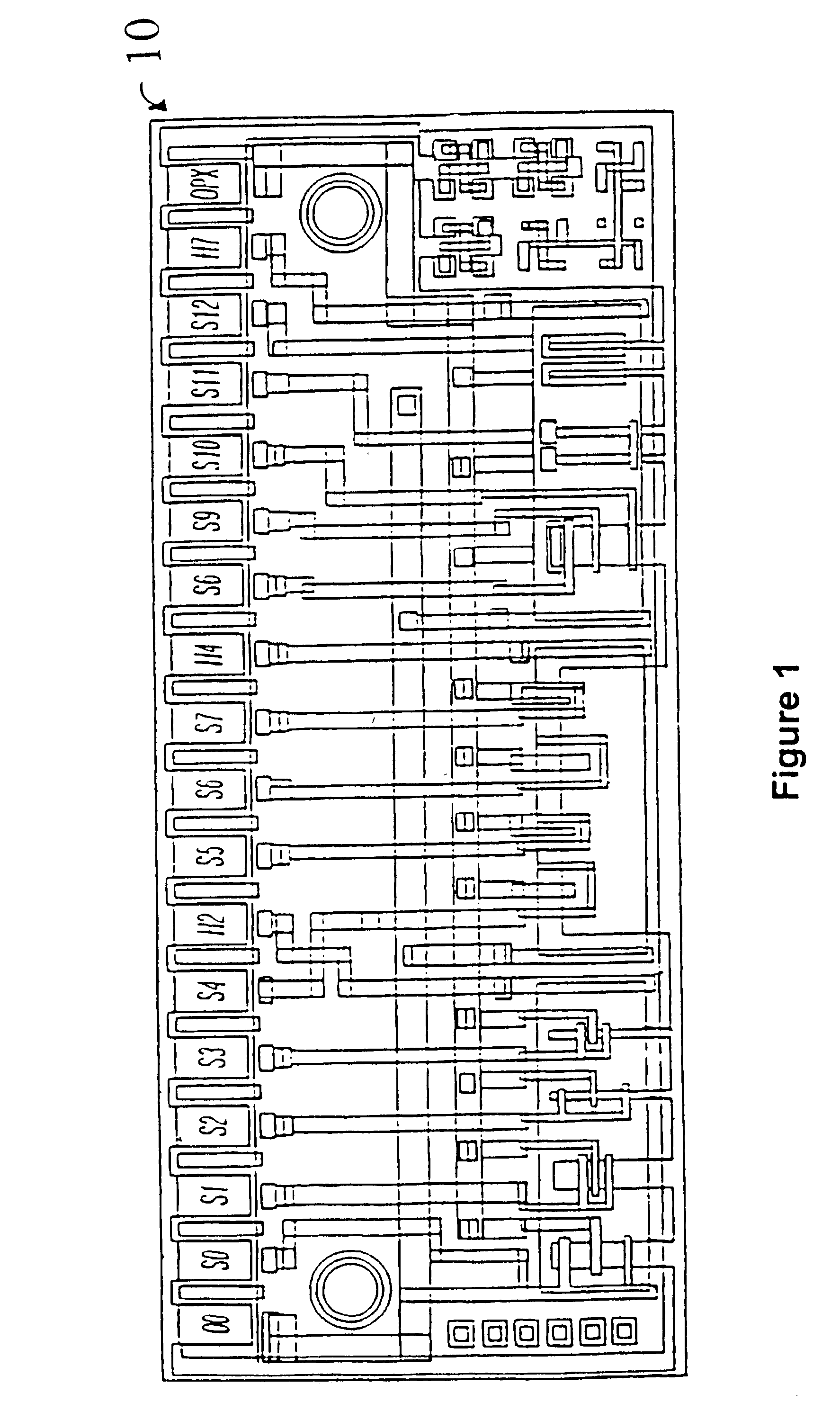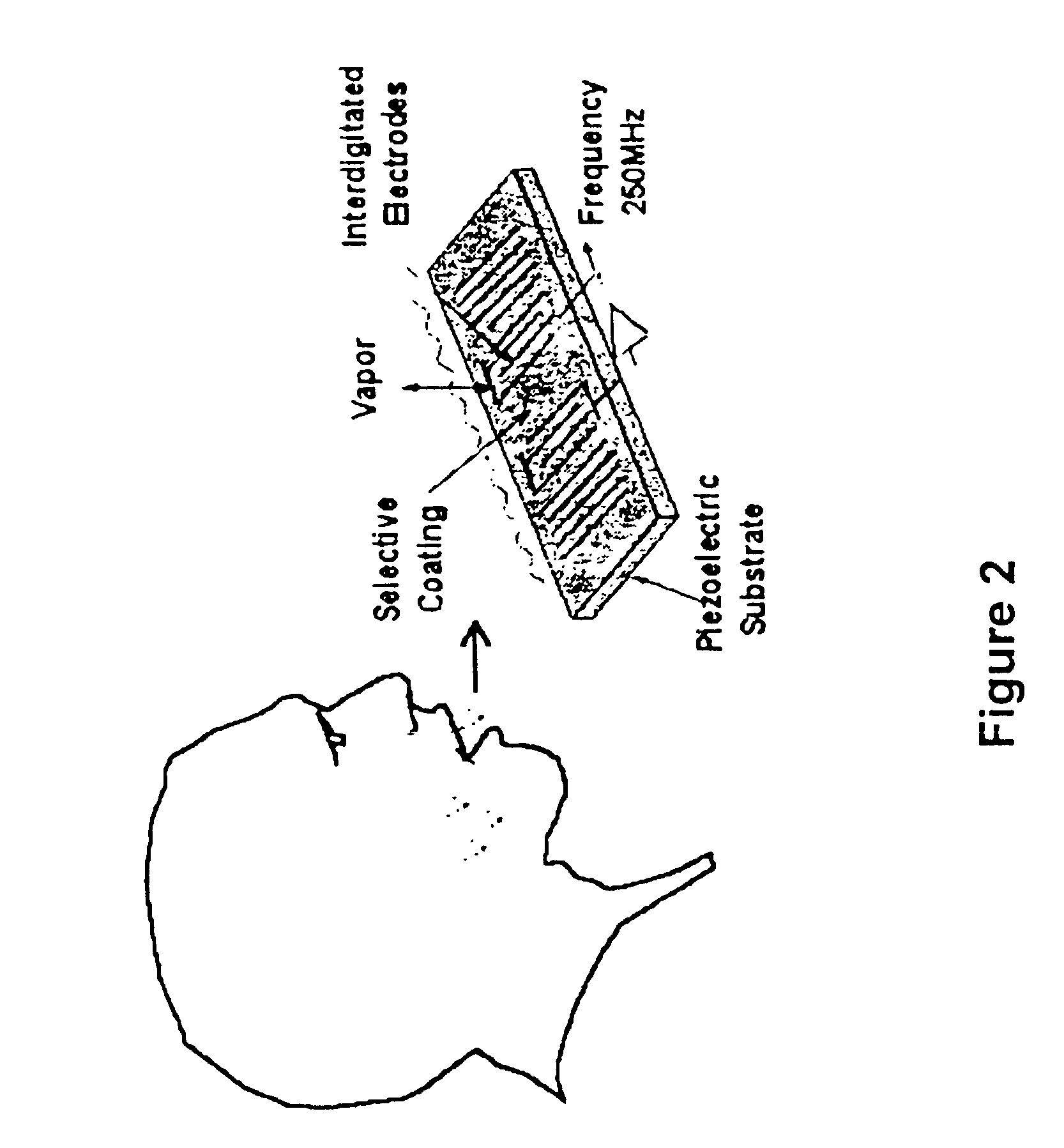Method and apparatus for detecting environmental smoke exposure
a technology for environmental smoke and detection methods, applied in the direction of respiratory organ evaluation, diagnostic recording/measuring, instruments, etc., can solve the problems of large economic burden on the population, significant morbidity and mortality, and children are particularly susceptible to smoke exposur
- Summary
- Abstract
- Description
- Claims
- Application Information
AI Technical Summary
Benefits of technology
Problems solved by technology
Method used
Image
Examples
example 2
Diagnostic Software Development
[0081] Diagnostic software can identify compounds, and in the case of the detection of tobacco smoke, a library of signatures is recorded to compare with the signatures obtained from the sensor system. Such software includes complex signal processing / neural networks. The system distinguishes analytes from the many interferents that are normally found in exhaled breath. Once the signatures of analytes is known, samples of exhaled breath are taken at various times during the day and on multiple days. These samples are analyzed for interferents and then known concentrations of analytes are added to exhaled breath samples to evaluate the ability of the system to detect the tobacco analytes in the presence of confounding interferents.
[0082] Multiple sensors address the broad response of the sensing technology and guarantee selectivity (statistical detection). Statistical pattern recognition divides the full measurement space into a set of regions that are a...
PUM
| Property | Measurement | Unit |
|---|---|---|
| thickness | aaaaa | aaaaa |
| thickness | aaaaa | aaaaa |
| volume | aaaaa | aaaaa |
Abstract
Description
Claims
Application Information
 Login to View More
Login to View More - R&D
- Intellectual Property
- Life Sciences
- Materials
- Tech Scout
- Unparalleled Data Quality
- Higher Quality Content
- 60% Fewer Hallucinations
Browse by: Latest US Patents, China's latest patents, Technical Efficacy Thesaurus, Application Domain, Technology Topic, Popular Technical Reports.
© 2025 PatSnap. All rights reserved.Legal|Privacy policy|Modern Slavery Act Transparency Statement|Sitemap|About US| Contact US: help@patsnap.com



